

8/14/20: Older Children & the Coronavirus: A New Wrinkle in the Debate. A study by researchers in South Korea last month suggested that children between the ages of 10 and 19 spread the coronavirus more frequently than adults — a widely reported finding that influenced the debate about the risks of reopening schools.

But additional data from the research team now calls that conclusion into question; it’s not clear who was infecting whom. The incident underscores the need to consider the preponderance of evidence, rather than any single study, when making decisions about children’s health or education, scientists said. 7/24/20: COVID-19 infection in children—here's what we know. Since the beginning of the coronavirus pandemic, children have been largely spared the worst health impacts of COVID-19.
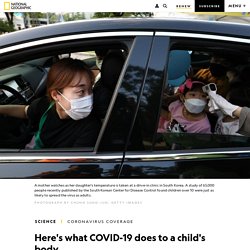
The same SARS-CoV-2 virus capable of killing a 50-year-old might leave a four-year-old unscathed. Now, the U.S. Centers for Disease Control and Prevention is recommending K-12 schools reopen this fall, saying the health risks should be weighed against the detriment of being kept home—which disproportionately impacts low-income and minority children and those with disabilities who may rely more on programs like school lunch and after-school care. When those children are kept from school, their grades grades slip, mental and physical health suffers, key times to socialize are lost, and many are falling behind on their routine vaccines.
“Children are suffering in different ways from adults,” says Megan Tschudy, a pediatrician at the Johns Hopkins University School of Medicine. 7/18/20: Older Children Spread the Coronavirus Just as Much as Adults, New Study Finds. Still, experts said the approach was reasonable.
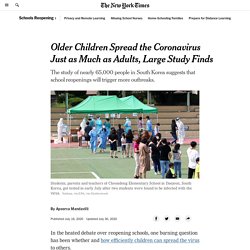
“It is also from a place with great contact tracing, done at the point interventions were being put in place,” said Bill Hanage, an epidemiologist at the Harvard T.H. Chan School of Public Health. Children under 10 were roughly half as likely as adults to spread the virus to others, consistent with other studies. That may be because children generally exhale less air — and therefore less virus-laden air — or because they exhale that air closer to the ground, making it less likely that adults would breathe it in. Even so, the number of new infections seeded by children may rise when schools reopen, the study authors cautioned. 7/16/20: Contact Tracing during Coronavirus Disease Outbreak, South Korea. Disclaimer: Early release articles are not considered as final versions.
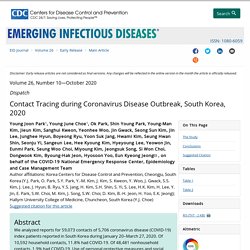
6/11/20: Why children avoid worst coronavirus complications might lie in their arteries. Since the coronavirus outbreak began, scientists have been trying to work out why children are much less likely than adults to experience severe complications from the infection.

Now research suggests that the answer might lie in children’s healthy blood vessels. Children make up only a small proportion of those infected by SARS-CoV-2, the virus that causes COVID-19. A large survey by the US Centers for Disease Control and Prevention in Atlanta, Georgia, found that children aged 17 and under, who make up 22% of the US population, account for fewer than 2% of confirmed COVID-19 infections across the United States. And, of 2,572 children included in the survey, only 5.7% went to hospital and only three died. Several theories have been proposed to explain why children aren’t getting so ill. Many adults with serious COVID-19 experience clotting in their blood vessels, which leads to heart attacks or strokes. 5/5/20: New Studies Add Evidence that Children May Transmit the Coronavirus.
E-learning approaches may temporarily provide children with a routine, “but any parent will tell you it’s not really learning,” she said.
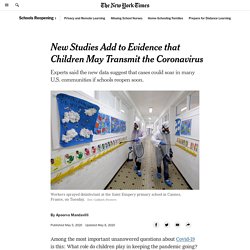
Children are known to backslide during the summer months, and adding several more months to that might permanently hurt them, and particularly those who are already struggling. Children also need the social aspects of school, and for some children, home may not even be a safe place, she said. “I’m not saying we need to absolutely rip off the Band-aid and reopen schools tomorrow,” she said, “but we have to consider these other endpoints.”
Dr. 5/4/20 Study to determine incidence of novel coronavirus infection in U.S. children begins. Loading Skip to main content Site Menu COVID-19 is an emerging, rapidly evolving situation.
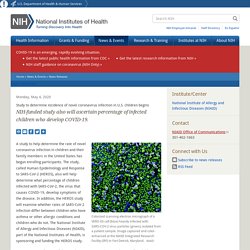
Get the latest public health information from CDC » Get the latest research information from NIH » NIH staff guidance on coronavirus (NIH Only) » You are here Home » News & Events » News Releases News Releases News Release Monday, May 4, 2020 Study to determine incidence of novel coronavirus infection in U.S. children begins NIH-funded study also will ascertain percentage of infected children who develop COVID-19. AddThis Sharing Buttons Share to PrintShare to EmailShare to FacebookShare to TwitterShare to More Colorized scanning electron micrograph of a VERO E6 cell (blue) heavily infected with SARS-COV-2 virus particles (green), isolated from a patient sample.
A study to help determine the rate of novel coronavirus infection in children and their family members in the United States has begun enrolling participants. Leading the HEROS study is Tina V. The study will be conducted completely remotely. Reference. 3/25/20: Young, middle-aged people, barely sick with COVID-19, dying from strokes. Oxley gasped when he got to the patient’s age and covid-19 status: 44, positive.
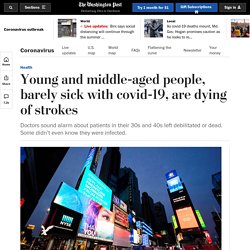
The man was among several recent stroke patients in their 30s to 40s who were all infected with the coronavirus. The median age for that type of severe stroke is 74. As Oxley, an interventional neurologist, began the procedure to remove the clot, he observed something he had never seen before. On the monitors, the brain typically shows up as a tangle of black squiggles — “like a can of spaghetti,” he said — that provide a map of blood vessels.
A clot shows up as a blank spot. Why does Covid-19 kill some young, healthy people—and spare others? As the new coronavirus continues to spread throughout the United States, reports of young people suddenly dying from Covid-19, the disease caused by the virus, are beginning to surface—and health experts aren't exactly sure why that's happening to some, when the disease causes only mild symptoms for most young patients.
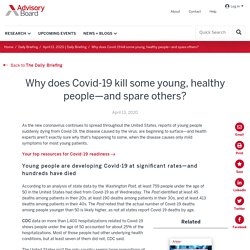
Your top resources for Covid-19 readiness Young people are developing Covid-19 at significant rates—and hundreds have died According to an analysis of state data by the Washington Post, at least 759 people under the age of 50 in the United States had died from Covid-19 as of Wednesday. The Post identified at least 45 deaths among patients in their 20s, at least 190 deaths among patients in their 30s, and at least 413 deaths among patients in their 40s. Covid-19: Multisystem Inflammatory Syndrome in Children ( MIS-C )